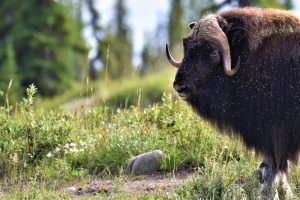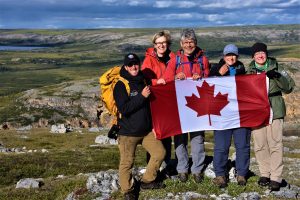Pages 345-350
Thomas King showcases his knowledge in many ways throughout Green Grass Running Water. Each section, paragraph, sentence and word is deliberate. They cast a deeper meaning that challenges the reader’s perception of the truth while allowing them to search for clues and get excited when a reference is discovered. Perhaps Jane Flick’s article displays that excitement the best as she is able to annotate many sections of the book for the deeper meaning behind names and stories.
For this exercise, I will be looking at a section of the novel that has many biblical references. It appears that Thomas King has done a lot of research on the Bible. This is to say that it would be foolish for him to offer criticism of the religion without hard facts and knowledge of the text. There are many stories from the Bible that are familiar with those that have grown up in western society. It is important however, that when having a discussion or making a criticism that facts be presented. It is important to read the Bible even without being religious. Thomas King’s novel is much stronger for having the proper facts.
For this section I will refer to the King James Version of the Bible.
Beginning with the references, Coyote is tasked with the retelling of the story. Coyote is finding it difficult to perform that task and is coming up Biblical answers instead. The first one that is used in this passage is Coyote responds with the Old Woman falls into a “fiery furnace”. Thomas King does not pick random parts of the bible to throw into his own text, there is meaning. The fiery furnace referenced in Daniel 3:8-25 speaks about how three men refuse to bow down to their oppressor, are thrown into a fiery furnace and come out unscathed. This is a direct relation to the characters in the novel as Robinson Crusoe, Lone Ranger, Hawkeye and Ishmael are defiant to Dr. Joe Hovaugh.
The second Biblical reference is that Old Woman falls into a manger. The manger is known the first cradle after Jesus was born. The reference could then be made to later in the scene with Young Man Walking on Water which the indigenous name given to Jesus. The golden calf reference further exemplifies the christian narrative of the worship of wealth or something that is sinful which relates to the storyline of the First Woman with Ahdamn and the forbidden fruit. They were free to eat anything but the one fruit. The Pillar of Salt could be tied to that same storyline of First Woman and Ahdam. In the Bible, the Pillar of Salt story is about a family that is told to escape the dangers and not look back. The woman, scared looks back and is turned into a Pillar of Salt. The reference could also be given to Thought Woman who is impregnated in her part of the story.
The Burning Bush reference is more difficult to pinpoint but some believe that it represents the presence of god who is forever watching. The Burning Bush reference could be attributed to Changing Woman, but it also could be attributed to several other factors such as the relationship between the four elders and Dr. Joe Hovaugh as well as the role of the Rangers throughout the novel. The idea that there is always someone watching over and there to judge and stop you at any moment.
These are my thoughts on this section of the novel. I was intrigued by the Biblical references and wanted to research what each reference was about and how it could relate to the overall narrative. My thoughts could all be wrong, but I do believe that King has specifically picked these Biblical references for a reason. My last blog post discussed Coyote’s role in the novel and although my opinions were not widely held, it was interesting to get other perspectives on the role of Coyote and why these Biblical references are important to the character and the overall theme of the novel.
Works Cited
King James Version.”Old Testament”. “New Testament”. Biblegateway.com.https://www.biblegateway.com/
Emba, Christine. “You should read the Bible”.Opinion. Washington Post. March 30thhttps://www.washingtonpost.com/opinions/even-atheists-should-read-the-bible/2018/03/30/98a1133c-3444-11e8-94fa-32d48460b955_story.html?noredirect=on&utm_term=.de5e01f81cbc
King, Thomas. “Green Grass Running Water” Harper Collins. Toronto. 1994.
Flick, Jane. “Reading Notes for Thomas King’s Green Grass, Running Water” Canadian Litterature. 1999
Patterson. Erika. “Lesson 3.3”.ENGL 470 99C Canadian Studies: Canadian Literary Genres. UBC Blogs.https://blogs.ubc.ca/engl470-99c-2018wc/unit-3/lesson-3-3/






